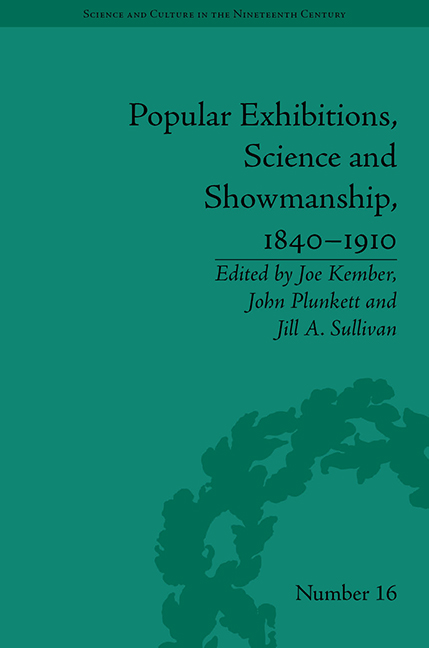Book contents
- Frontmatter
- CONTENTS
- Acknowledgements
- List of Contributors
- List of Figures and Tables
- Introduction
- Part I Science and Spectacle
- Part II Word and Image
- Part III Staging Knowledge
- Part IV The Politics of Display
- 10 Meeting the Zulus: Displayed Peoples and the Shows of London, 1853–79
- 11 Unwrapping the Past: Egyptian Mummies on Show
- 12 ‘The Wandering Friend’: Andrew Carnegie's Dinosaur Invades Europe, 1902–14
- Notes
- Index
11 - Unwrapping the Past: Egyptian Mummies on Show
from Part IV - The Politics of Display
- Frontmatter
- CONTENTS
- Acknowledgements
- List of Contributors
- List of Figures and Tables
- Introduction
- Part I Science and Spectacle
- Part II Word and Image
- Part III Staging Knowledge
- Part IV The Politics of Display
- 10 Meeting the Zulus: Displayed Peoples and the Shows of London, 1853–79
- 11 Unwrapping the Past: Egyptian Mummies on Show
- 12 ‘The Wandering Friend’: Andrew Carnegie's Dinosaur Invades Europe, 1902–14
- Notes
- Index
Summary
In 1824, Horace Smith, captivated by Giovanni Belzoni's recent exhibition of an Egyptian mummy, published an address that commanded it return to life to reveal both the secrets of her life and those of Ancient Egyptian culture:
Speak! for thou long enough has acted dummy;
Thou hast a tongue, come, let us hear its tune;
Thou ârt standing on thy legs above ground mummy!
Revisiting the glimpses of the moon.
Not like thin ghosts or disembodied creatures,
But with thy bones and flesh, and limbs and features.
Literally embodying the past, Egyptian mummies were and indeed still are compelling. They occupy a liminal world between the dead and the living that can both fascinate and unnerve. As Smith realized, they are full of paradox for they resist death by somehow seeming still very much alive. They ‘speak’ of mysticism and the exotic, yet at the same time remind us of the final fate we are all destined to achieve. The urge, however, to come face to face with an Egyptian mummy was never more desired than in the early decades of the nineteenth century. The 1820s saw an incredible rise in the acquisition of Egyptian mummies for souvenirs and as artefacts for collection and display. Treated more as commodities and historical specimens than as human remains, they were displayed, unwrapped, cut open and divested of their funerary goods, all in the name of knowledge.
- Type
- Chapter
- Information
- Popular Exhibitions, Science and Showmanship, 1840–1910 , pp. 199 - 218Publisher: Pickering & ChattoFirst published in: 2014



